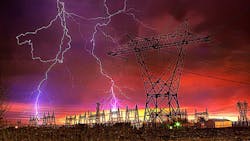Almost six years after the initial discussion about a cap-and-trade approach to arresting carbon emissions from domestic manufacturing and power plants — an approach defeated by legislators who sensed it would impose onerous costs on, and limit energy resources for the people they represent — we have arrived at a “resolution”: the U.S. Environmental Protection Agency will simply dictate those rules, and that will begin the process of moderating global warming. Or so they expect.
EPA proposes to cut carbon pollution from U.S. power plants by 30% from 2005 levels by 2030. No one doubts that if these regulations are implemented 600 or so power plants fueled by coal will be closed, at significant cost to the operators.
It seems obvious there would be costs to energy consumers too, because the penalties, the cost of new capacity development, etc. would be passed on to utility customers. The EPA and its supporters don’t see it that way: their singular objection apparently is to the carbon emitted by burning coal, which is identified as the largest source of greenhouse gas many scientists insist is dangerously warming the Earth’s atmosphere. Eliminating that will end any dispute. It’s more difficult to get a scientific analysis to explain what effect will be had by ending carbon emissions in the manner laid out by EPA, but that’s not much of an issue to them in any case. Ending the carbon emissions and achieving targets set in a 2009 United Nations agreement on GHG pollution is the real goal.
There are analyses to show that the EPA’s crackdown will be a boon for economic development. A Natural Resources Defense Council study claims that limiting on carbon emissions from power plants will save U.S. energy customers $37.4 billion by 2020, and create more than 274,000 jobs. To understand how this can be, you have to first recognize the penalties to be imposed by EPA as the alternative outcome, and the investments in new, “clean” energy sources as the more beneficial consequence.
The other side has forecasts too, predicting the end of various types of manufacturing activity in individual states, and a shift in global economic advantage to nations that will not end their carbon emissions. But EPA has made this a discussion about authority, not power.
Unlike the earlier, federal mandates, EPA’s new rule will allow state agencies to determine how they will achieve the reductions. So, it’s not automatic that coal-fired power plants will be closed, at least not right away, but the generating capacity would be replaced by wind or solar energy sources in order to achieve the mandated reduction schedules. The cap-and-trade provisions would allow the carbon emitters to manage the cost of their compliance, buying and selling pollution permits in order to keep some operations in use while others are developed. Understand, these provisions are meant to soften the impact of EPA’s mandates.
So that my skepticism will not be misunderstood, let me note that I am not taking a side in the contentious debate about the warming of the Earth’s atmosphere or the role of human civilization in that trend. I am questioning the ability of the EPA to alter U.S. energy consumers’ contribution to that trend.
The earlier attempt to establish a cap-and-trade regimen may have failed because of concerns it would drive up consumers’ cost, but the real weakness of this approach is its convoluted logic: first, tell consumers they cannot have something, and then collect penalties from them when they violate that rule. It is a complete misreading of human nature to assume that having authority gives one the right not only to set rules, but to dictate the results too. EPA may succeed in establishing its version of the science of carbon emission, but it will only get its intended results if it can ensure human beings will not find simpler, shorter, or more satisfying ways to accomplish what they want too.
About the Author
Robert Brooks
Content Director
Robert Brooks has been a business-to-business reporter, writer, editor, and columnist for more than 20 years, specializing in the primary metal and basic manufacturing industries. His work has covered a wide range of topics, including process technology, resource development, material selection, product design, workforce development, and industrial market strategies, among others.
